Search Result
Results for "
irritation
" in MedChemExpress (MCE) Product Catalog:
7
Biochemical Assay Reagents
2
Isotope-Labeled Compounds
| Cat. No. |
Product Name |
Target |
Research Areas |
Chemical Structure |
-
- HY-Y0695
-
|
Naphthol Blue Black
|
Fluorescent Dye
|
Others
|
|
Amido Black 10B (Naphthol Blue Black) is a highly toxic azo dye for amino acid staining. Amido Black 10B can create several problems in the human respiratory system and may also cause skin and eye irritations .
|
-

-
- HY-108519
-
|
|
ROCK
|
Neurological Disease
|
|
AS1892802 is a potent, orally active, and highly selective inhibitor of ROCK. The onset of antinociceptive effect of AS1892802 is as fast as those of Tramadol and Diclofenac. AS1892802 did not induce gastric irritation or abnormal behavior. AS1892802 is an attractive analgesic profile for the research of severe osteoarthritis pain .
|
-
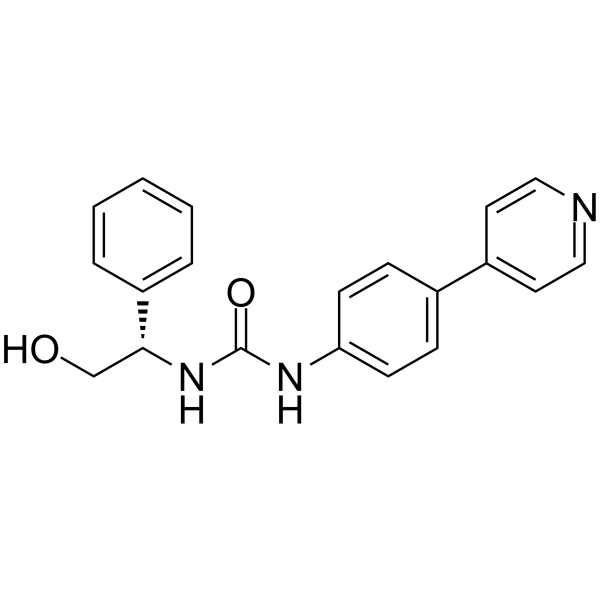
-
- HY-B1013
-
|
Fludroxycortide; Flurandrenolone
|
Others
|
Inflammation/Immunology
|
|
Fludroxycortide is a synthetic topical steroid and is used as an anti-inflammatory treatment for use on skin irritations.
|
-
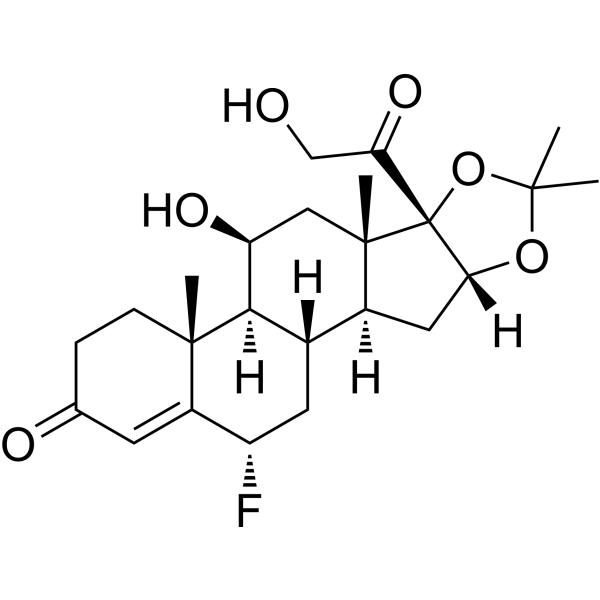
-
- HY-D1005A16
-
|
PEG-PPG-PEG, 4600 (Averag)
|
Biochemical Assay Reagents
|
Others
|
|
Poloxamer 235 P85 is block polymer of polyoxyethylene and polyoxypropylene with average molecular mass of 4600. Poloxamer 235 P85 exhibits acute and subchronic toxicity in albino rats with an oral LD50 of >34.6 g/kg. Poloxamer 235 P85 induces ocular irritation in rabbits .
|
-

-
- HY-D0348
-
|
Disperse Blue 7; 1,4-DiOH-5,8-bis(2-OHethyl)aminoanthraquinone
|
Biochemical Assay Reagents
|
Others
|
|
Celliton Fast Blue Green B (Disperse Blue 7), a blue-green dye used in textiles. The aqueous extract of Celliton Fast Blue Green B causes no signs of skin irritation and sensitization in laboratory animals. Celliton Fast Blue Green B colored textiles with no irritation in human .
|
-
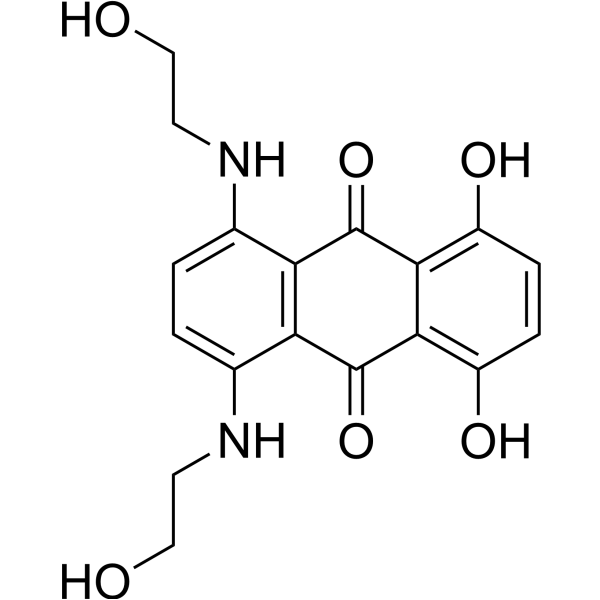
-
- HY-B1183
-
-

-
- HY-W015591S
-
|
(±)-Mandelic acid-2,3,4,5,6-d5; DL-Mandelic acid-2,3,4,5,6-d5
|
Bacterial
Endogenous Metabolite
|
Infection
|
|
Mandelic acid-2,3,4,5,6-d5 is the deuterium labeled Mandelic acid. Mandelic acid ((±)-Mandelic acid), an alpha-hydroxycarboxylic acid, has been widely used as an intermediate of pharmaceutical and fine chemicals. Mandelic acid shows antimicrobial activity and has been used for the research of urinary tract infections and vaginal trichomoniasis. Mandelic acid exhibits high sperm-immobilizing activity and low vaginal irritation[1][2].
|
-
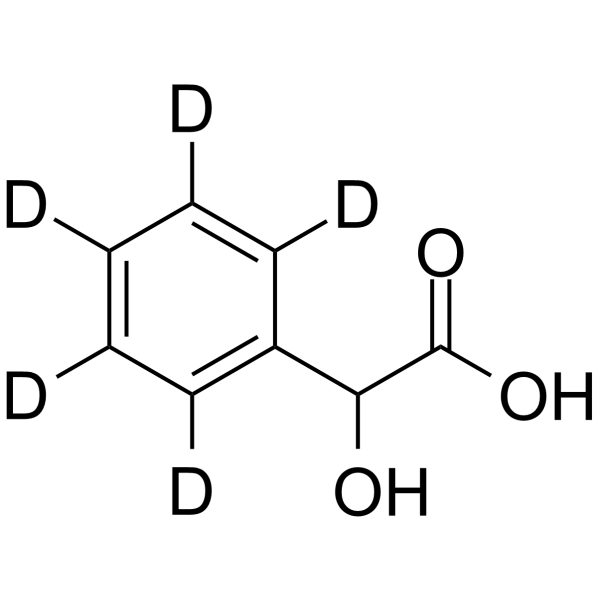
-
- HY-N12840
-
|
|
Others
|
Metabolic Disease
|
|
Logmalicid B is an iridoid glycoside compound that can be isolated from Cornus officinalis and can be used in diabetes research .
|
-

-
- HY-W103183
-
|
8-Hydroxy-7-iodo-5-quinolinesulfonic acid
|
Fungal
Parasite
|
Infection
|
|
Ferron (8-Hydroxy-7-iodo-5-quinolinesulfonic acid) has antiseptic and antifungal activity. Ferron can prevent skin and mucosa bacterial irritations and inflammations .
|
-

-
- HY-W015591
-
|
(±)-Mandelic acid; DL-Mandelic acid
|
Bacterial
Endogenous Metabolite
|
Infection
|
|
Mandelic acid ((±)-Mandelic acid), an alpha-hydroxycarboxylic acid, has been widely used as an intermediate of pharmaceutical and fine chemicals. Mandelic acid shows antimicrobial activity and has been used for the research of urinary tract infections and vaginal trichomoniasis. Mandelic acid exhibits high sperm-immobilizing activity and low vaginal irritation .
|
-
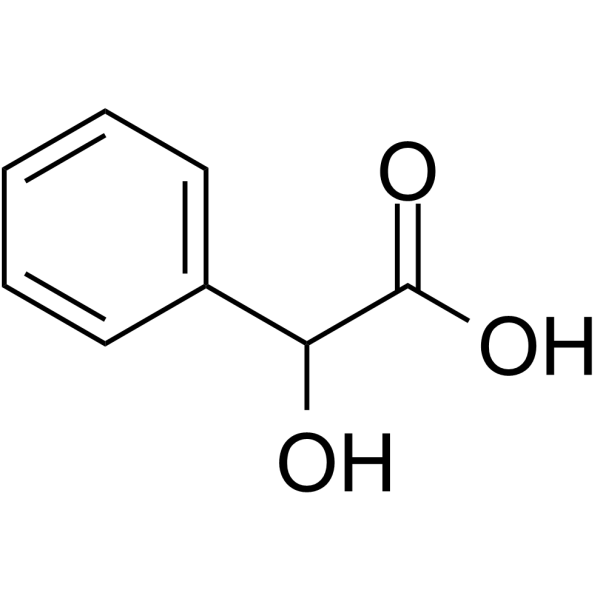
-
- HY-B0550
-
|
Bismuth oxysalicylate; Bismuth(III) salicylate basic
|
PGE synthase
|
Neurological Disease
|
|
Bismuth Subsalicylate is a potent and orally active antacid and anti-diarrheal agent. Bismuth Subsalicylate reduces inflammation/irritation of stomach and intestinal lining through inhibition of prostaglandin synthesis in vivo . Bismuth Subsalicylate is widely used for the research of diarrheal disorders, including indigestion, diarrhoea, nausea, et al .
|
-
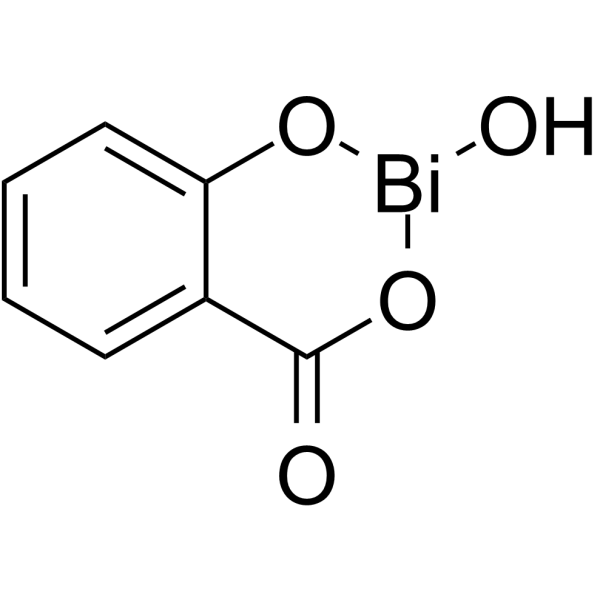
-
- HY-125920
-
|
|
Biochemical Assay Reagents
|
Others
|
|
Lauroylsarcosine sodium is a surfactant commonly used in personal care and cosmetics such as shampoos, facial cleansers and toothpaste. It works by lowering the surface tension of water, allowing it to better penetrate and clean surfaces. Lauroylsarcosine sodium is considered safe for cosmetic use and is approved for use in several countries. However, it can cause skin irritation in high concentrations or with prolonged exposure.
|
-
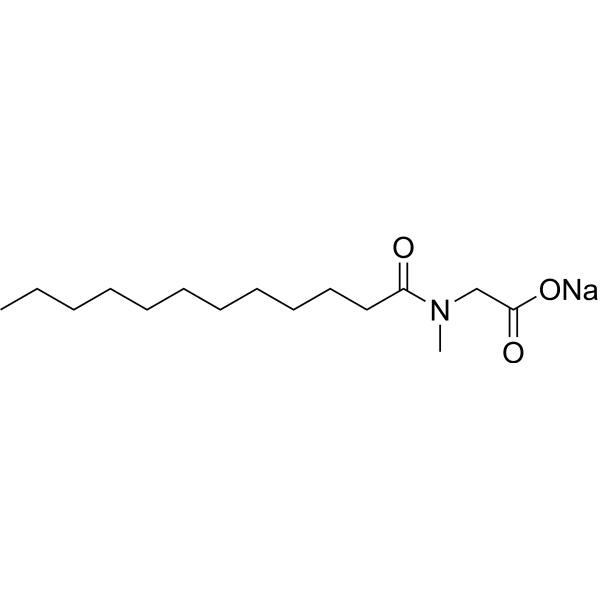
-
- HY-106037
-
|
|
Others
|
Others
|
|
PGF2α-isopropyl ester is a Prostaglandin F2α (HY-12956) derivative, which is active in lowering the intraocular pressure (IOP) through increased uveoscleral outflow of aqueous humor. PGF2α-isopropyl ester causes side effects of conjunctival hyperemia and ocular irritation .
|
-
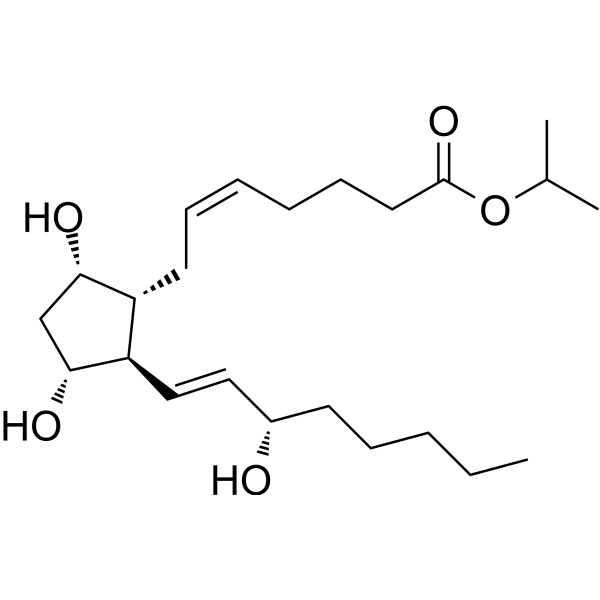
-
- HY-N1369
-
Menthol
4 Publications Verification
|
Calcium Channel
|
Neurological Disease
Cancer
|
|
Menthol is an analgesic and TRPM8 modulator. TRPM8 is a cold temperature sensing ion channel, and Menthol can regulate TRPM8 to exert analgesic and anti-irritation mechanisms. Menthol stimulates cold receptors and produces a cooling sensation by inhibiting Ca ++ currents in neuronal cell membranes. Menthol also improves oral nicotine rejection in mice .
|
-
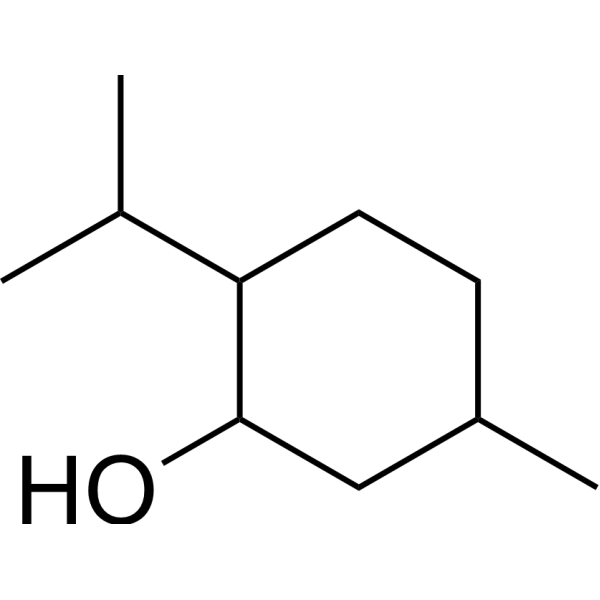
-
- HY-17039
-
|
R89674
|
Histamine Receptor
|
Inflammation/Immunology
Endocrinology
|
|
Alcaftadine (R89674) is a histamine H1 receptor antagonist, which is used to prevent eye irritation brought on by allergic conjunctivitis. Alcaftadine is a broad-spectrum antihistamine displaying a high affinity for histamine H1 and H2 receptors and a lower affinity for H4 receptors. Alcaftadine also exhibits modulatory action on immune cell recruitment and mast cell stabilizing effects .
|
-
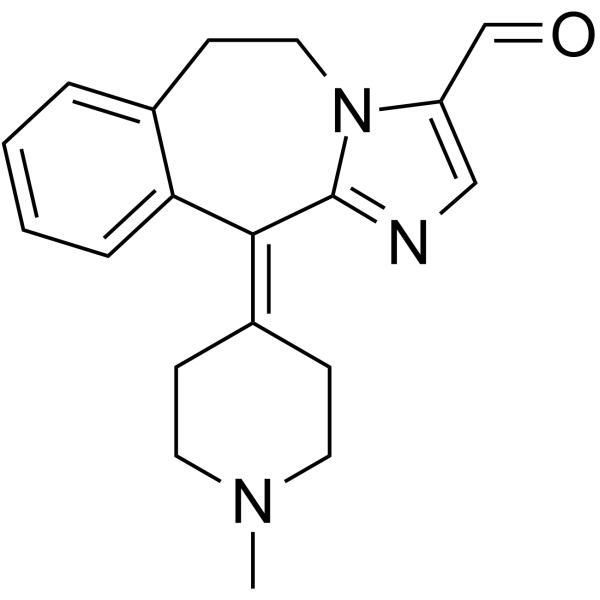
-
- HY-15491
-
|
|
COX
Apoptosis
|
Cancer
|
|
AG-024322 is a potent ATP-competitive pan-CDK inhibitor against cell cycle kinases CDK1, CDK2, and CDK4 with Ki values in the 1-3 nM range . AG-024322 displays broad-spectrum anti-tumor activity and clear target modulation in vivo. AG-024322 induces cell apoptosis .
|
-
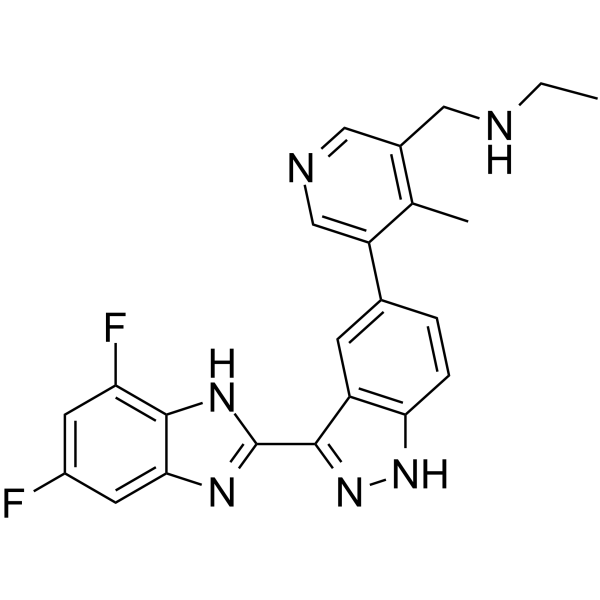
-
- HY-B0550R
-
|
Bismuth oxysalicylate (Standard); Bismuth(III) salicylate basic (Standard)
|
PGE synthase
|
Neurological Disease
|
|
Bismuth Subsalicylate (Standard) is the analytical standard of Bismuth Subsalicylate. This product is intended for research and analytical applications. Bismuth Subsalicylate is a potent and orally active antacid and anti-diarrheal agent. Bismuth Subsalicylate reduces inflammation/irritation of stomach and intestinal lining through inhibition of prostaglandin synthesis in vivo . Bismuth Subsalicylate is widely used for the research of diarrheal disorders, including indigestion, diarrhoea, nausea, et al .
|
-

-
- HY-D1005A6
-
|
PEG-PPG-PEG, 2200 (Averag)
|
Biochemical Assay Reagents
|
Others
|
|
Poloxamer 124 L44 is block polymer of polyoxyethylene and polyoxypropylene with average molecular mass of 2200. Poloxamer 124 L44 reveals toxicity with an oral LD50 of 5 g/kg in albino rats. Poloxamer 124 L44 causes ocular irritation. Poloxamer 124 L44 forms thermoreversible hydrogel, that is utilized in food additives, drug delivery carriers in cosmetics, pharmaceutical ingredients and tissue engineering .
|
-

-
- HY-N9484S
-
|
|
Drug Metabolite
Isotope-Labeled Compounds
|
Others
|
|
Menthofuran- 13C2 is 13C labeled Menthol (HY-N1369). Menthol is an analgesic and TRPM8 modulator. TRPM8 is a cold temperature sensing ion channel, and Menthol can regulate TRPM8 to exert analgesic and anti-irritation mechanisms. Menthol stimulates cold receptors and produces a cooling sensation by inhibiting Ca ++ currents in neuronal cell membranes. Menthol also improves oral nicotine rejection in mice .
|
-
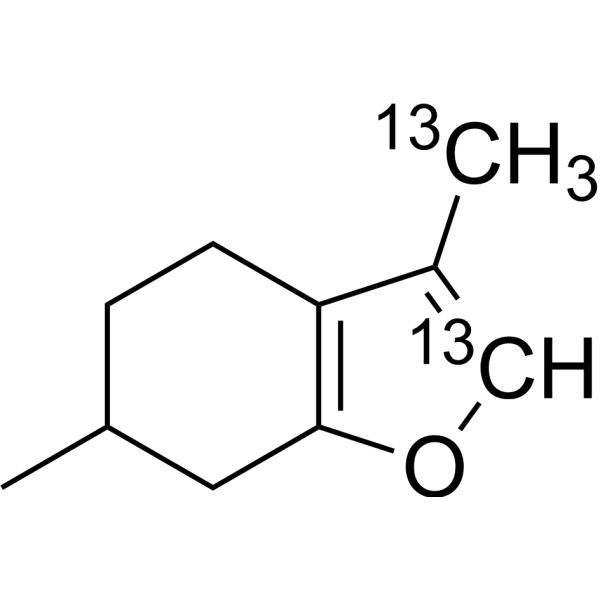
-
- HY-131119
-
|
Dioctadecyldimethylammonium bromide; DODAB
|
Liposome
|
Others
|
|
Dimethyldioctadecylammonium bromide is a synthetic cationic lipid commonly used in gene delivery and vaccine development. Also known as DODAB or DDAB, it consists of a positively charged ammonium head group and two long hydrophobic tails. These properties make it useful for forming liposomes and other lipid-based nanoparticles that can efficiently deliver genetic material into cells. In addition to its applications in biotechnology, DDAB is also used in surfactants, emulsifiers and fabric softeners. However, due to its potential toxicity and irritation, extreme care should be taken when handling DDAB.
|
-
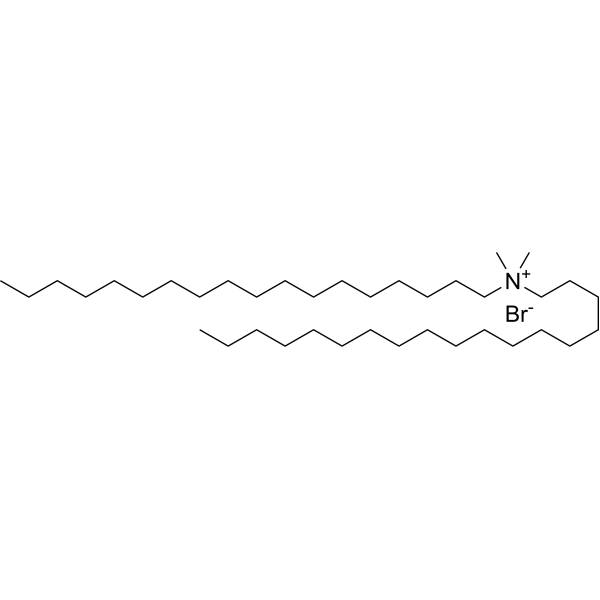
-
- HY-Y0683A
-
|
|
Biochemical Assay Reagents
|
Others
|
|
Petrolatum (white) is an ointment vehicle for many drugs, due to its low skin irritation. Petrolatum (white) can be used as an excipient, such as ointment base, lubricant, adhesive, viscous agent, excipient. Pharmaceutical excipients, or pharmaceutical auxiliaries, refer to other chemical substances used in the pharmaceutical process other than pharmaceutical ingredients. Pharmaceutical excipients generally refer to inactive ingredients in pharmaceutical preparations, which can improve the stability, solubility and processability of pharmaceutical preparations. Pharmaceutical excipients also affect the absorption, distribution, metabolism, and elimination (ADME) processes of co-administered drugs .
|
-
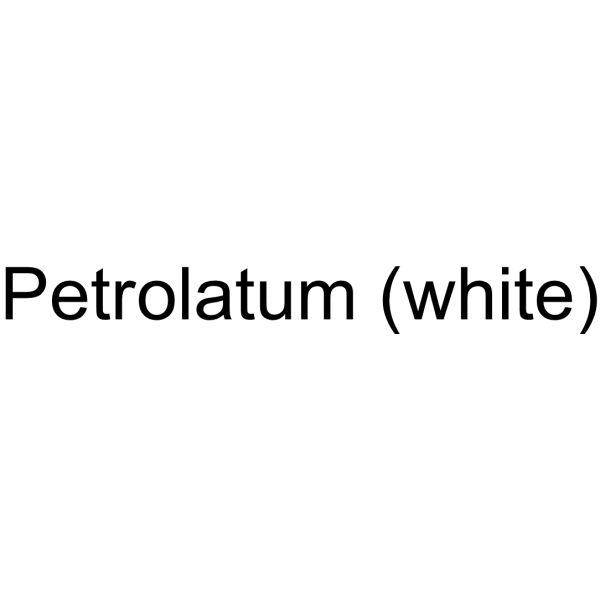
-
- HY-W010807
-
|
|
Biochemical Assay Reagents
|
Others
|
|
Hexadecyl palmitate is an organic compound commonly used in the cosmetic industry as an emollient, thickener and skin conditioning agent. Cetyl palmitate is derived from a mixture of cetyl alcohol (a fatty alcohol) and palmitic acid (a saturated fatty acid). It is often used in skin care products such as moisturizers, lotions, and creams to improve their texture and Helps them glide smoothly on the skin. In addition to its use in cosmetics, cetyl palmitate is used in other industries including pharmaceuticals, food additives and lubricants. Overall, it's considered safe for use in personal care products, but like any other ingredient, it may cause irritation or an allergic reaction in some people.
|
-

-
- HY-141582
-
|
N-Stearoyl phytosphingosine
|
Biochemical Assay Reagents
|
Others
|
|
C18 Phytoceramide (t18:0/18:0) (Cer(t18:0/18:0)) is a bioactive sphingolipid found in the stratum corneum of Saccharomyces cerevisiae, wheat grain, and mammalian epidermis. Cer(t18:0/18:0) consists of a phytosphingosine backbone amine linked to a C18 fatty acid chain. Cer(t18:0/18:0) has the function of regulating apoptosis, cell differentiation, proliferation of smooth muscle cells and inhibition of mitochondrial respiratory chain. It also suppresses the expression of allergic cytokines IL-4, TNF-α, and transcription factors c-Jun and NF-κB in histone-stimulated mouse skin tissue. Formulations containing cer(t18:0/18:0) have been used as skin protectants in cosmetics as they reduce water loss and prevent epidermal dehydration and irritation.
|
-

-
- HY-W099594
-
|
Benzyldimethyldodecylammonium bromide
|
Biochemical Assay Reagents
|
Others
|
|
N-Benzyl-N, N-dimethyldodecan-1-aminium bromide, also known as Benzalkonium Chloride (BAC), is a quaternary ammonium compound widely used as an antimicrobial and surfactant in various industries. BAC is commonly used as a disinfectant and antiseptic in a variety of products including hand sanitizers, disinfectant wipes and eye drops. Its ability to kill bacteria, viruses and fungi makes it an effective tool in preventing the spread of infection. BAC is also used as a preservative and disinfectant in the food industry. It is added to food packaging and processing equipment to prevent the growth of microorganisms and increase the shelf life of foods. Additionally, BACs are found in many household products such as cleaning solutions, fabric softeners and personal care products. Its surfactant properties allow it to be used to reduce surface tension and increase the effectiveness of cleaning agents. Although BAC has many uses, ingestion or exposure to high concentrations of BAC can cause skin irritation and other adverse effects.
|
-
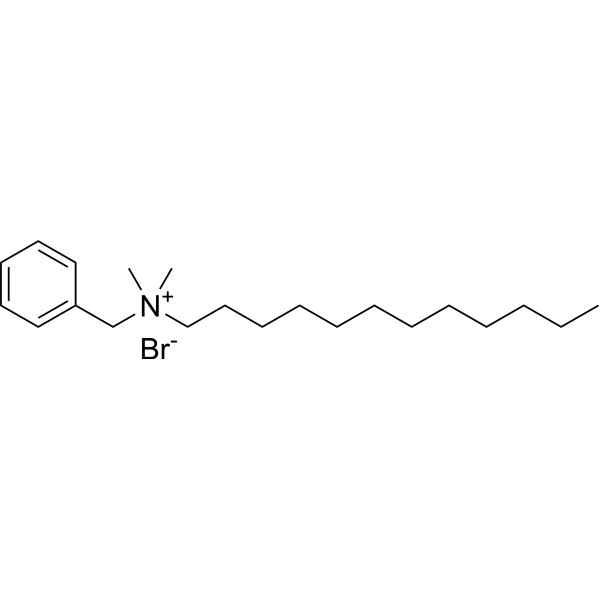
| Cat. No. |
Product Name |
Type |
-
- HY-Y0695
-
|
Naphthol Blue Black
|
Protein Labeling
|
|
Amido Black 10B (Naphthol Blue Black) is a highly toxic azo dye for amino acid staining. Amido Black 10B can create several problems in the human respiratory system and may also cause skin and eye irritations .
|
| Cat. No. |
Product Name |
Type |
-
- HY-125920
-
|
|
Biochemical Assay Reagents
|
|
Lauroylsarcosine sodium is a surfactant commonly used in personal care and cosmetics such as shampoos, facial cleansers and toothpaste. It works by lowering the surface tension of water, allowing it to better penetrate and clean surfaces. Lauroylsarcosine sodium is considered safe for cosmetic use and is approved for use in several countries. However, it can cause skin irritation in high concentrations or with prolonged exposure.
|
-
- HY-131119
-
|
Dioctadecyldimethylammonium bromide; DODAB
|
Drug Delivery
|
|
Dimethyldioctadecylammonium bromide is a synthetic cationic lipid commonly used in gene delivery and vaccine development. Also known as DODAB or DDAB, it consists of a positively charged ammonium head group and two long hydrophobic tails. These properties make it useful for forming liposomes and other lipid-based nanoparticles that can efficiently deliver genetic material into cells. In addition to its applications in biotechnology, DDAB is also used in surfactants, emulsifiers and fabric softeners. However, due to its potential toxicity and irritation, extreme care should be taken when handling DDAB.
|
-
- HY-W010807
-
|
|
Biochemical Assay Reagents
|
|
Hexadecyl palmitate is an organic compound commonly used in the cosmetic industry as an emollient, thickener and skin conditioning agent. Cetyl palmitate is derived from a mixture of cetyl alcohol (a fatty alcohol) and palmitic acid (a saturated fatty acid). It is often used in skin care products such as moisturizers, lotions, and creams to improve their texture and Helps them glide smoothly on the skin. In addition to its use in cosmetics, cetyl palmitate is used in other industries including pharmaceuticals, food additives and lubricants. Overall, it's considered safe for use in personal care products, but like any other ingredient, it may cause irritation or an allergic reaction in some people.
|
-
- HY-D1005A16
-
|
PEG-PPG-PEG, 4600 (Averag)
|
Co-solvents
|
|
Poloxamer 235 P85 is block polymer of polyoxyethylene and polyoxypropylene with average molecular mass of 4600. Poloxamer 235 P85 exhibits acute and subchronic toxicity in albino rats with an oral LD50 of >34.6 g/kg. Poloxamer 235 P85 induces ocular irritation in rabbits .
|
-
- HY-D1005A6
-
|
PEG-PPG-PEG, 2200 (Averag)
|
Co-solvents
|
|
Poloxamer 124 L44 is block polymer of polyoxyethylene and polyoxypropylene with average molecular mass of 2200. Poloxamer 124 L44 reveals toxicity with an oral LD50 of 5 g/kg in albino rats. Poloxamer 124 L44 causes ocular irritation. Poloxamer 124 L44 forms thermoreversible hydrogel, that is utilized in food additives, drug delivery carriers in cosmetics, pharmaceutical ingredients and tissue engineering .
|
-
- HY-141582
-
|
N-Stearoyl phytosphingosine
|
Biochemical Assay Reagents
|
|
C18 Phytoceramide (t18:0/18:0) (Cer(t18:0/18:0)) is a bioactive sphingolipid found in the stratum corneum of Saccharomyces cerevisiae, wheat grain, and mammalian epidermis. Cer(t18:0/18:0) consists of a phytosphingosine backbone amine linked to a C18 fatty acid chain. Cer(t18:0/18:0) has the function of regulating apoptosis, cell differentiation, proliferation of smooth muscle cells and inhibition of mitochondrial respiratory chain. It also suppresses the expression of allergic cytokines IL-4, TNF-α, and transcription factors c-Jun and NF-κB in histone-stimulated mouse skin tissue. Formulations containing cer(t18:0/18:0) have been used as skin protectants in cosmetics as they reduce water loss and prevent epidermal dehydration and irritation.
|
-
- HY-W099594
-
|
Benzyldimethyldodecylammonium bromide
|
Biochemical Assay Reagents
|
|
N-Benzyl-N, N-dimethyldodecan-1-aminium bromide, also known as Benzalkonium Chloride (BAC), is a quaternary ammonium compound widely used as an antimicrobial and surfactant in various industries. BAC is commonly used as a disinfectant and antiseptic in a variety of products including hand sanitizers, disinfectant wipes and eye drops. Its ability to kill bacteria, viruses and fungi makes it an effective tool in preventing the spread of infection. BAC is also used as a preservative and disinfectant in the food industry. It is added to food packaging and processing equipment to prevent the growth of microorganisms and increase the shelf life of foods. Additionally, BACs are found in many household products such as cleaning solutions, fabric softeners and personal care products. Its surfactant properties allow it to be used to reduce surface tension and increase the effectiveness of cleaning agents. Although BAC has many uses, ingestion or exposure to high concentrations of BAC can cause skin irritation and other adverse effects.
|
| Cat. No. |
Product Name |
Category |
Target |
Chemical Structure |
| Cat. No. |
Product Name |
Chemical Structure |
-
- HY-W015591S
-
|
|
|
Mandelic acid-2,3,4,5,6-d5 is the deuterium labeled Mandelic acid. Mandelic acid ((±)-Mandelic acid), an alpha-hydroxycarboxylic acid, has been widely used as an intermediate of pharmaceutical and fine chemicals. Mandelic acid shows antimicrobial activity and has been used for the research of urinary tract infections and vaginal trichomoniasis. Mandelic acid exhibits high sperm-immobilizing activity and low vaginal irritation[1][2].
|
-

-
- HY-N9484S
-
|
|
|
Menthofuran- 13C2 is 13C labeled Menthol (HY-N1369). Menthol is an analgesic and TRPM8 modulator. TRPM8 is a cold temperature sensing ion channel, and Menthol can regulate TRPM8 to exert analgesic and anti-irritation mechanisms. Menthol stimulates cold receptors and produces a cooling sensation by inhibiting Ca ++ currents in neuronal cell membranes. Menthol also improves oral nicotine rejection in mice .
|
-

Your information is safe with us. * Required Fields.
Inquiry Information
- Product Name:
- Cat. No.:
- Quantity:
- MCE Japan Authorized Agent:
































